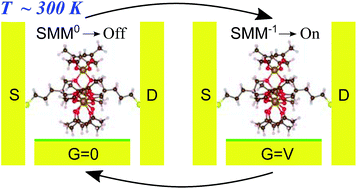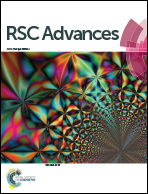Room temperature memory device using single-molecule magnets
Abstract
To make memory devices based on an individual single-molecule magnet work far above the blocking temperature, we propose a new route, where the information is contained in the charge state of the molecule, and it works through charging and discharging the molecule by applying gate voltages. Here, a model device built on a single-molecule magnet, Fe4, is taken as an example to exhibit the validity of our proposed route. Ab initio calculations show that the two different charge states with a moderately large energy shift of 1.2 eV are responsible for the low and high conductances in this device: one corresponds to the neutral state of the molecule, and the other to its anionic state. Moreover, the transition from the neutral state to the anionic state is accompanied by a giant increase of nearly two orders of magnitude in the conductance. Additionally, the low and high conductances before and after charging the molecule are hardly dependent on the different spin configurations of the Fe4 molecule, which indicates that the performance of the Fe4 memory device is probably preserved even at room temperature.


 Please wait while we load your content...
Please wait while we load your content...